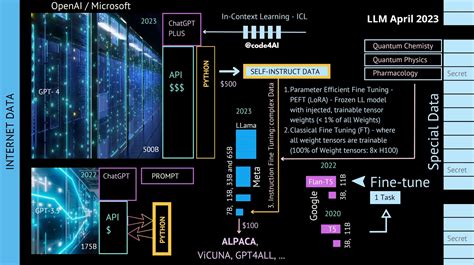The rapid advancements in large language models (LLMs) over recent years have catapulted the artificial intelligence industry into the spotlight, promising astonishing capabilities from chat interfaces to advanced data processing. However, there is growing discourse within the AI community that suggests a potential plateau—a looming barrier that seems to limit the inherent intelligence and applicability of these models. Are we truly hitting this ceiling, or are there ways to innovate beyond this imminent brick wall?
Industry voices are divided. Some experts argue that the current strides we’ve made are nearing their natural limits due to the saturation of available training data and the inherent inaccuracies in translation from model to real-world application. This is juxtaposed against evidence of exponential growth in AI performance, which hasn’t shown signs of slowing, challenging the notion that we’ve reached the terminus of AI advancements.
Data plays a pivotal role in AI training, yet paradoxically, as our datasets grow, so do the complexities of data management. Commentators like Andrej Karpathy have noted that not all data is created equal—emphasizing quality over quantity. Poorly curated, noisy data detracts from model development, often embedding biases and inefficiencies. As such, refining and curating high-quality data will become indispensable in the continuous evolution of LLMs.
An emerging consensus suggests that while traditional LLMs may stagnate without new data or innovative algorithms, integrating multifaceted inputs like multimodality and sensory data could herald a new dawn. These inputs would enable AI to navigate contexts more comprehensively, akin to how humans use sight, hearing, and other senses. This holistic approach could bridge the gap between the theoretical capabilities of LLMs and practical applications, potentially transforming sectors like robotics and autonomous systems.
The economic implications of hyping AI advancements are non-trivial as well. Overvalued companies in the AI sector could spell economic turbulence. The market’s valuation of companies like Tesla and Nvidia, often seen through the lens of their potential AI innovations, can lead to inflated stock prices and, consequently, increased market volatility. This economic bubble, some argue, compromises trust and may sway public opinion against genuine innovation.
User experience (UX) is another arena where AI’s potential faces skepticism. As one commenter pointed out, chat interfaces, while revolutionary, can introduce friction, especially for non-technical users. Streamlining UX through more intuitive, visual interfaces could democratize AI usability and enhance user adoption. This would move beyond the constraints of traditional conversational AI and embrace a broader spectrum of interactive, user-friendly designs.
One compelling angle is the idea of specialized AI models working collaboratively to ensure precision and efficiency. This ‘Large Philosopher Model’ concept envisions AI agents, each trained in niche areas, interacting to synthesize more accurate and reliable outputs. This mode would involve immense computational resources but could drastically enhance AI’s reliability and minimize errors.
Skeptics of AI’s continued growth often cite limitations in LLMs’ predictive capabilities, especially in chaotic systems such as weather or stock market predictions. Yet, there is optimism around hybrid models that combine the deterministic prowess of traditional algorithms with the adaptability of AI. These hybrid approaches might not only break the perceived ceiling but also redefine the boundaries of what AI can achieve.
Ultimately, the AI industry’s future hinges on balancing ambition with practical execution. Companies will need a tempered but optimistic approach, investing in the diversification of training data, advancing multimodal AI, and emphasizing user-centric design. The allure of artificial general intelligence (AGI) may continue to drive us forward, but mindful, incremental advancements are more likely to yield sustainable and meaningful breakthroughs. The road ahead may be fraught with challenges, but with thoughtful navigation, it holds immense potential for innovation.


Leave a Reply